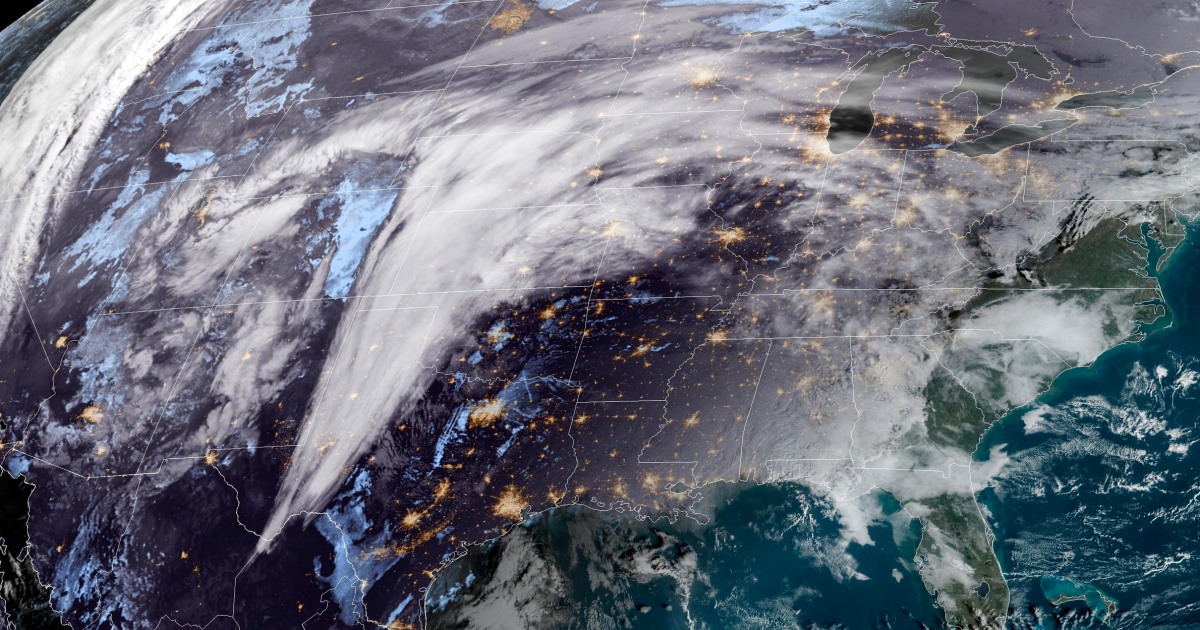A winter storm moving across the Central Plains and Upper Midwest this week is expected to bring heavy snow, sleet and freezing rain to parts of the United States, while tornadoes could form farther south, the US warned. authorities.
The storm is expected to bring snow to the Central High Plains as it moves northeast toward the Great Lakes, likely producing moderate to heavy snow, sleet and freezing rain by Tuesday, the National Weather Service said.
«Heavy snow rates of 1 to 2 inches per hour may be accompanied by thunder, especially in southern South Dakota and far southwestern Minnesota,» the weather service said in a forecast update early Monday. More than 12 inches of heavy snow is expected to accumulate rapidly from the Nebraska Panhandle to southwestern Minnesota, he said.
Gusty winds are also expected to produce areas of drifting snow, which the weather service warned could lead to snow-covered roads and reduced visibility, creating potential travel hazards.
The weather system is also expected to bring significant freezing rain to parts of northeast Nebraska as far south as Minnesota, the National Weather Service said. He warned that freezing rain could pose further travel risks and lead to power outages.
Moisture from the western Gulf of Mexico is expected to move northward over the western Gulf Coast/Lower Mississippi Valley, with the Plains front moving into moisture, bringing severe showers and thunderstorms to the area Monday morning, the weather center said. An increased risk of severe thunderstorms has been issued over the Lower Mississippi Valley Monday through Tuesday morning.
Thunderstorms could bring frequent lightning, strong gusts of wind, hail and «a few tornadoes,» the National Weather Service said.
Heavy rain is also expected in connection with thunderstorms, and the weather service is issuing a slight risk of excessive rainfall in parts of the mid/lower Mississippi Valley Monday through Tuesday.
«The associated heavy rainfall will mainly create localized areas of flash flooding, with urban areas, roads and small streams being the most vulnerable,» the weather service said.
There is an increased risk of severe thunderstorms Monday afternoon and evening in parts of eastern Texas, southeastern Oklahoma, Arkansas, and northern Louisiana.
Nearly 19 million people are in an area at risk from storms that can produce tornadoes, damaging wind gusts, flooding, downpours, and hail.
Parts of Arkansas, western Tennessee, northern Louisiana and eastern Texas also remain under flood watches through Monday night.
On Tuesday, severe storms are expected to continue rumbling to the east and affect areas throughout the Tennessee Valley and the central Gulf Coast.
It comes after a «once-in-a-lifetime» snowstorm killed dozens last month, with New York’s Erie County, which includes Buffalo, at the center of the storm’s most intense conditions.
Buffalo Mayor Byron Brown said on MSNBC’s «Morning Joe» that the storm was «probably worse than anything this city has seen in over 50 years.»

